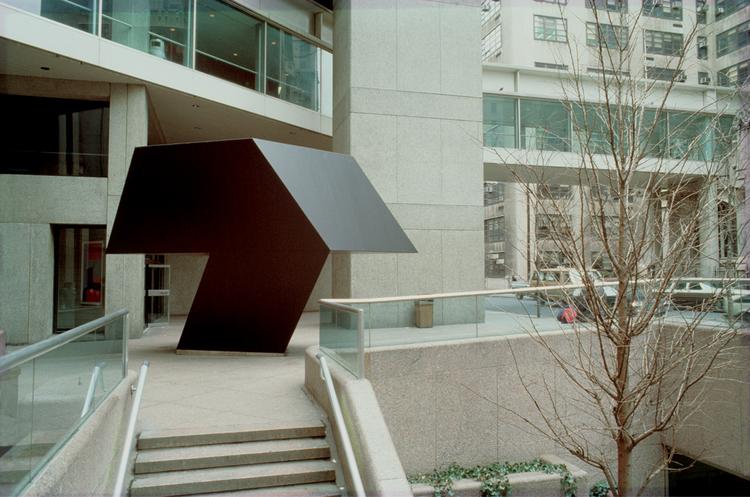
There’s something missing from the entrance of the West building on 68th Street and Lexington Avenue: the giant black cube-like sculpture, more formally known as the Tau, has been removed from the spot it has occupied since 1984.
According to a spokesperson for the college, the sculpture has been relocated to an indoor storage facility to be assessed for restoration. While the Tau is gone, there will also be some renovations done to the area where the sculpture was located. Leaks in the surface have affected the campus facilities beneath the area.
When exactly the Tau is coming back is yet to be announced, but the spokesperson said it will be making its return once it’s been restored and repairs are finished.
While this piece has been standing in front of the school for 34 years, many students say they never knew its history, and few seemed to have a connection with the sculpture.
“I’ve been going here for three years and I barely remembered what it looked like when it was gone,” said Martha Marin, a senior. She only seemed to remember the Tau as a Pokestop in the popular PokemonGo app. Others, such as Courtney Chambers, a junior, only remember it as being in the way. “Sometimes when I was coming up from the train station I would just walk right into it,” said Chambers.
The black steel sculpture had geometry as the root of its inspiration for its creator, Tony Smith, an architect who taught at Hunter from 1962 to 1980. The sculpture’s original model was constructed by combining small cardboard tetrahedrons; this was Smith’s signature process.
Smith began designing the Tau, whose formal title is Tau (1/3), in 1961. It took about 20 years to design it, and the sculpture was installed outside the West building entrance in 1984, when the building was opened. Unfortunately Smith did not get to see his fully realized sculpture — he died of a heart attack in December 1980. The Tau (1/3) is also not the only one in existence; its sister sculpture, Tau (AP), was originally located in Smith’s hometown of South Orange, N.J., but was moved to Meadowland Park in November 2008.
It namesake, tau, refers to the Greek letter “t,” referring to its shape. To students on campus, however, the most common description of the Tau was “a cube” or “the black thing in front of the train station,” said Alexandra Ureha.
Over the years, there have been efforts by faculty, such as Professor Hendrik Dey, to keep the Tau relevant to students.
“The statue is unquestionably important to Hunter, not only because it is our most visible, famous and valuable piece of public art, but even more because the sculptor of Tau, Tony Smith, is one of the more important American sculptors of the later 20th Century,” said Dey. “The Tau is a memorial to Tony Smith’s service to Hunter College.”
On the first day of Art History 111, Dey projects a picture of the Tau and uses it to teach in the first few moments of the lecture. Dey notes that the response is usually positive once students can put a name to the sculpture they use as shelter from the rain.

